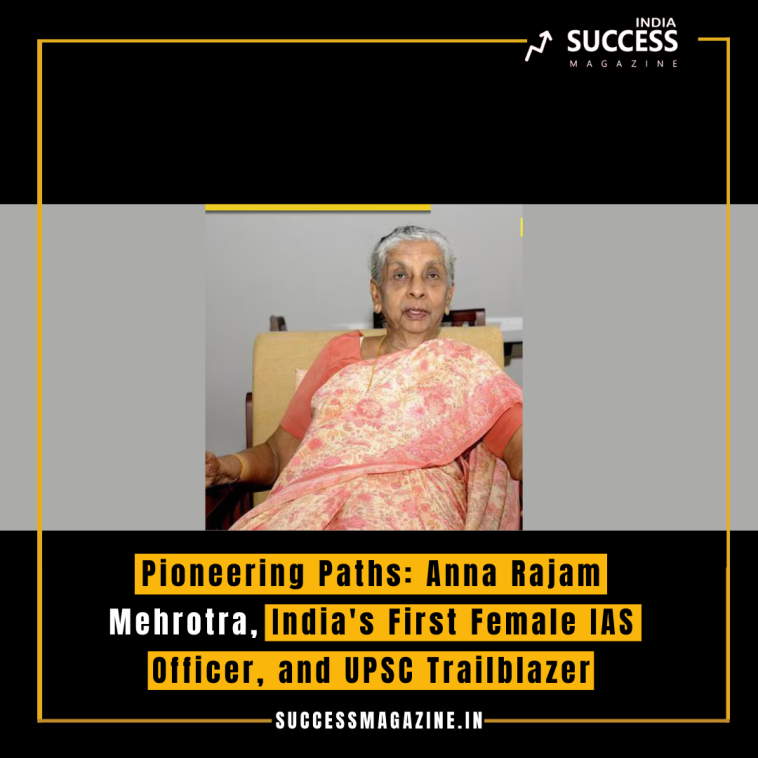Anna Rajam George (née Mehrotra) holds a unique place in Indian history as the country’s first female Indian Administrative Service (IAS) officer, blazing a trail for women in public service. Her journey not only signifies personal triumph but also marks a significant milestone in India’s progression towards gender equality in its bureaucratic ranks.
Born in Kerala in 1927, Anna Rajam Mehrotra’s early life was marked by a strong emphasis on education, a value instilled by her progressive family. Her father, an engineer, ensured that Anna and her siblings received quality education, fostering an environment where intellectual pursuits were encouraged irrespective of gender. Anna excelled academically, and her brilliance shone through in every endeavor she undertook.
In 1951, at a time when India was still finding its feet as an independent nation, Anna Rajam took the bold step of sitting for the Union Public Service Commission (UPSC) examination. The UPSC, responsible for recruiting officers into the civil services, had been a male-dominated domain. Her decision to appear for this competitive examination was groundbreaking. She not only succeeded but also emerged as a role model, symbolizing the capabilities and potential of Indian women in governance and administration.
Anna Rajam’s success was monumental not just because she was a woman but also because of the broader context of the times. The early 1950s in India were a period of significant social and cultural change. Traditional gender roles were being questioned, and women were increasingly stepping out into public and professional spheres. Her achievement in the UPSC exam became a beacon of inspiration, encouraging many more women to aspire to careers in civil services.
After joining the IAS, Anna Rajam Mehrotra was posted in the Madras Cadre, where she held various important positions. Her tenure in the civil service was characterized by her dedication, integrity, and a deep commitment to public service. She navigated the complexities of administrative responsibilities with a unique blend of compassion and firmness, traits that won her respect from both colleagues and the public.
Throughout her career, Anna faced numerous challenges. The male-dominated environment of the civil services presented significant obstacles, from overt discrimination to subtle biases. However, she remained undeterred. Her perseverance and professionalism gradually changed perceptions, helping pave the way for future generations of women officers. By breaking through these barriers, she played a crucial role in normalizing the presence of women in Indian bureaucracy.
Anna Rajam Mehrotra’s legacy extends beyond her pioneering role in the IAS. She is a symbol of the transformative power of education and the importance of challenging societal norms. Her story is a testament to the impact one individual can have on society, inspiring countless women to pursue careers in public service and leadership.
Her contributions were recognized by the government and society, reflecting the profound respect she commanded throughout her life. Anna Rajam’s journey from a young girl in Kerala to India’s first female IAS officer encapsulates the spirit of resilience and ambition. Her life’s work continues to inspire and serve as a guiding light for those who dream of serving their nation through the civil services.
In conclusion, Anna Rajam Mehrotra’s pioneering path in the IAS is a remarkable chapter in India’s history. Her courage, intellect, and dedication not only broke gender barriers but also set a precedent for future generations. She remains a towering figure in the annals of Indian public service, exemplifying the indomitable spirit of women who aspire to make a difference.


